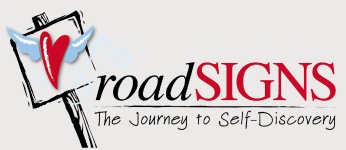Average is Over Over a period of three days, January 20th through 22nd, I had the great experience of attending the Cannexus National Career Development Conference in Ottawa. Although not specifically in the career development field myself, I felt this was an opportunity to learn what was going on and how our work with creating strength-based conversations might overlap. The opening keynote by Rich Feller on a Life Re-Imagined was a great start. A number of his comments resonated with me:
- Average is over
- There is a world of opportunity out there if you know how to engage it
- Our ability to be excellent is reliant on our ability to be high in imagination
- If we are uncommitted to learning we will struggle
- It’s a great time to be an entrepreneur, and more.
It was his comment that there are two types of work cultures: HIE’s (High Imagination Enabling) and LIE’s (Low Imagination Enabling). This led me to thinking about the factors that would contribute to developing HIE work cultures and how this is related to the work we are developing around Creating Strength-Based Work Cultures. I asked myself, how can a work culture be high in imagination if it does not understand what it already has in terms of resources. Imagination is stifled in many work cultures as people, managers and employees get stuck. They are accustomed to operating in a certain way and have lost or ignored their ability to re-frame situations and opportunities and move forward.
This short video is a humorous and poignant example: http://search.tb.ask.com/search/video.jhtml?searchfor=stuck+on+the+escalator+film+clip&cb=HJ&pg=GGmain&p2=%5EHJ%5Exdm005%5EYYA%5Eca&n=77fd7b74&qid=79b22bcbe11c4f1d8b1891a8eee288a3&pn=1&ss=sub&st=hp&ptb=573BA7D8-CF70-407E-BE32-FF3A869C9375&tpr=sbt&si=CMqjsbbJiroCFYZaMgoddmEAYQ&vid=VrSUe_m19FY
One of our favorite questions to ask ourselves and others is simple, ‘what else is possible?’ I have learned that this question makes people nervous as it forces them to take off their goal oriented blinders and to check their peripheral vision. While most people know that if you always do what you have always done, you will always get what you always got, they hesitate to change it up. That said, how will they survive? If average is over, what steps will people and organizations have to take as success in the future is re-defined. Careers, as we know, are no longer a linear path. Dr. Feller suggested they are more like a ‘slinky’, flexible, energy moving in both directions, easing your way through career transition.
Again, as I examined career transition, and how each individual approaches this, I considered the benefits of self-knowledge and knowing what makes you ‘tick’. Looking through the lens of my own experience, and I was not a typical baby boomer as I transitioned careers several times, I recognize that my approach was less than informed. I simply jumped from one job to another succeeding in having 14 positions in my first 17 years of work. Not ideal. What if I had worked with a professional who could help me assess my future choices? What if I could have seen myself through the lens of my strengths in addition to what engaged me? Would I have made different choices? Recognizing these trends, that average is over, and that imagination is key, how does one approach life and work? In his book Being a Star at Work, Robert Kelley suggests the following:
- Bring added value to your job every day and go beyond the job description
- Tap into ‘guru networks’ – know what you don’t know and where to find it
- Have organizational savvy – promote cooperation and move from conflict to getting things done.
Needless to say, a key to thriving in the work of the future will be internal motivation. The era of finding a job for a lifetime and expecting your employer to provide all the perks and opportunities are disappearing. Related to this is the knowledge of what you are good at, what your strengths are, where your interests and passion lies, and how you want to make a contribution. Daniel Pink summarizes by stating that better performance will hinge on:
- Autonomy: an urge to self-direct one’s career
- Mastery: a desire to get better and a commitment to lifelong learning
- Purpose: a yearning for something greater than what is
All of this leads me to believe that the idea of self-knowledge, of assessing, naming and knowing your qualities/strengths is an essential ingredient. I see strengths as a foundation upon which to build your ‘what’s next’, choosing the direction in which to go, understanding the learning that supports your strengths and engaging the best of who you are in your inner sense of meaning.
WOW! Thanks to Dr. Rich Feller for his enlightening presentation and for light me up!
For more information regarding assessing your preferred qualities/strengths, go to http://www.roadsigns.ca/products/lumina-portraits-2/
Until next time….
Betty
Join us for Living from your Strengths, http://www.roadsigns.ca/upcoming-retreats-events/coaching-circles-retreat/, a one-day retreat designed to help your assess your preferred qualities/strengths, to be held Saturday, February 15th, 2014. Follow the link for details.

